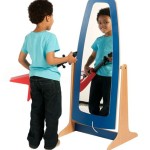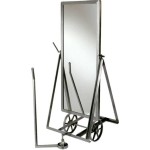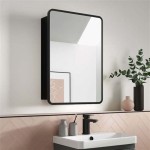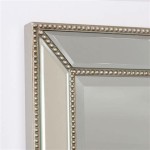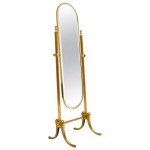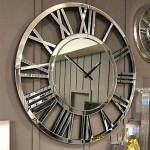How to Mirror iPhone Screen to PC via USB
Mirroring an iPhone screen to a PC offers several advantages, from enjoying multimedia content on a larger display to creating high-quality screen recordings for presentations or tutorials. While wireless mirroring methods exist, a USB connection generally provides a more stable, lag-free experience, particularly for tasks requiring real-time responsiveness.
1. Utilizing Third-Party Screen Mirroring Software
Numerous applications facilitate iPhone screen mirroring to a PC using a USB connection. These tools often provide additional features beyond basic mirroring, such as screen recording, screenshot capture, and enhanced audio streaming. Selecting a reputable application is crucial. Users should consider factors like operating system compatibility, features offered, and user reviews when choosing the appropriate software.
Once the desired software is installed on the PC, connecting the iPhone is usually straightforward. In most instances, the iPhone must be unlocked and connected to the PC with a USB cable. The software will then typically detect the connected device and prompt the user to initiate the mirroring process.
It is essential to ensure that the selected software is compatible with both the iPhone's iOS version and the PC's operating system. Compatibility issues can prevent successful mirroring or lead to performance problems. Carefully checking the software's system requirements before installation can prevent such issues.
2. Enabling Developer Mode (If Required)
Some mirroring applications may require enabling Developer Mode on the iPhone. This mode allows access to more advanced features and functions that are typically hidden from the average user. Enabling Developer Mode should be done with caution, as it can potentially expose the device to security vulnerabilities if not managed correctly.
The process for enabling Developer Mode may vary slightly depending on the iOS version. Generally, it involves navigating to the "Settings" app on the iPhone, then to "Privacy & Security," and then to "Developer Mode." Turning on this mode often requires restarting the iPhone.
3. Trusting the Computer
Upon connecting the iPhone to the PC, the iPhone may display a prompt asking whether to "Trust" the computer. This security measure protects against unauthorized access to the device's data. It is crucial to select "Trust" only if the connected computer is recognized and trusted. If the prompt appears unexpectedly or on an unfamiliar computer, selecting "Don't Trust" is advisable.
4. Configuring Mirroring Settings
After establishing the connection and trusting the computer, the mirroring software on the PC may present options for configuring the mirroring session. These options might include adjusting the display resolution, selecting the audio output device, and choosing whether to mirror the entire screen or only specific applications.
Optimizing these settings can enhance the mirroring experience. For instance, matching the mirroring resolution to the PC's display resolution can prevent scaling issues. Selecting the correct audio output ensures that the sound from the iPhone is routed correctly to the PC's speakers or headphones.
5. Troubleshooting Common Issues
Despite careful setup, occasional connection or performance problems can arise. Common issues include a black screen on the PC, delayed screen updates, or audio sync problems. If encountering such issues, checking the USB cable connection for secure attachment is a good first step. Restarting both the iPhone and the PC can also resolve many temporary software glitches.
If issues persist, consulting the mirroring software's documentation or online support resources can provide specific troubleshooting guidance. Verifying that the drivers for the iPhone are up to date on the PC can also prove beneficial. In some cases, reinstalling the mirroring software might be necessary.
6. Exploring Built-in Mirroring Features (QuickTime Player)
For basic screen mirroring without third-party software, users can utilize QuickTime Player on macOS. This built-in application allows for direct screen recording and mirroring from connected iOS devices. Simply connecting the iPhone to a Mac via USB and selecting it as the source in QuickTime Player enables screen mirroring.
While QuickTime Player offers a simple mirroring solution, it may lack the advanced features found in dedicated mirroring applications. However, for quickly displaying the iPhone screen on a Mac for presentations or demos, it represents a convenient alternative.
7. Considering Hardware Limitations
Certain older iPhones or PCs may not fully support all mirroring functionalities. Older hardware might lack the processing power or compatible ports for smooth, high-resolution mirroring. Checking the system requirements of the mirroring software and the specifications of both the iPhone and the PC is advised to ensure compatibility and optimal performance.

Best Ways To Screen Mirror Iphone Pc Via Usb Cable

Best Ways To Mirror Iphone Pc Via Usb Without Wifi

Newest How To Mirror Iphone Pc Via Usb

How To View Android Iphone Screen On Pc Via Usb Airdroid

How To Mirror Iphone Pc Via Usb 4 Proven Ways Solo Net

4 Ways How To Mirror Iphone Pc Via Usb Airdroid

Top 3 Ways To Mirror Iphone Pc Via Usb

Top 3 Ways To Mirror Iphone Pc Via Usb

How To Mirror Iphone Windows Pc Laptop Mac Full Guide

Solved Can I Mirror Iphone To Pc Without

